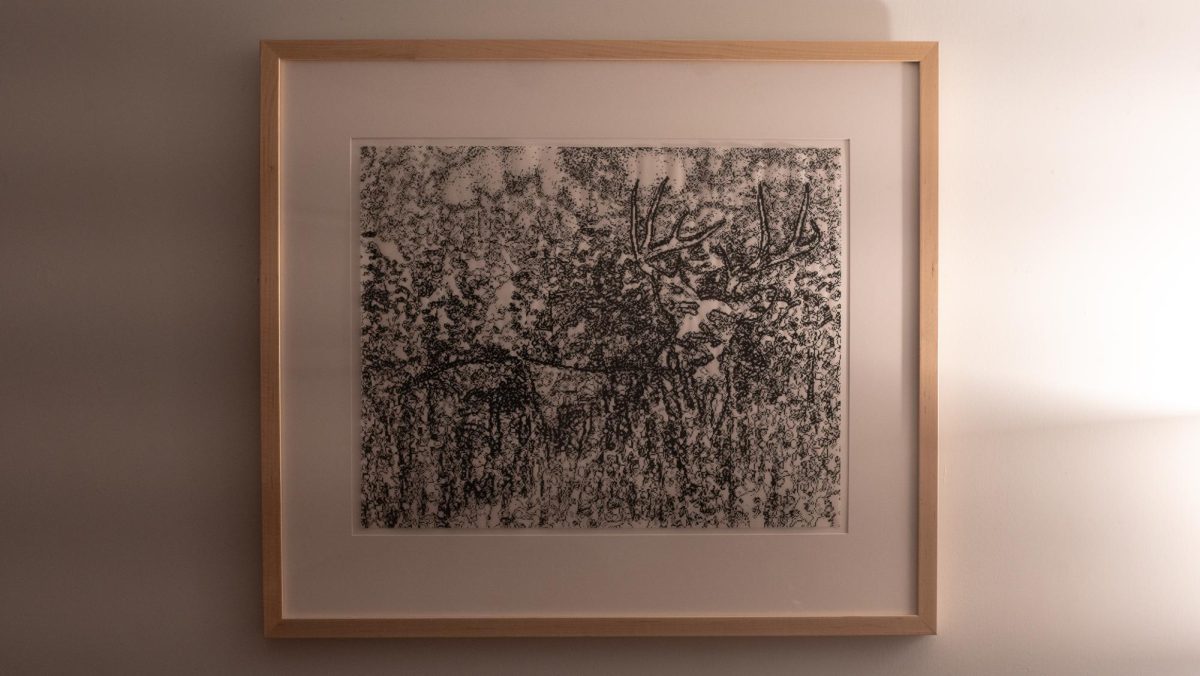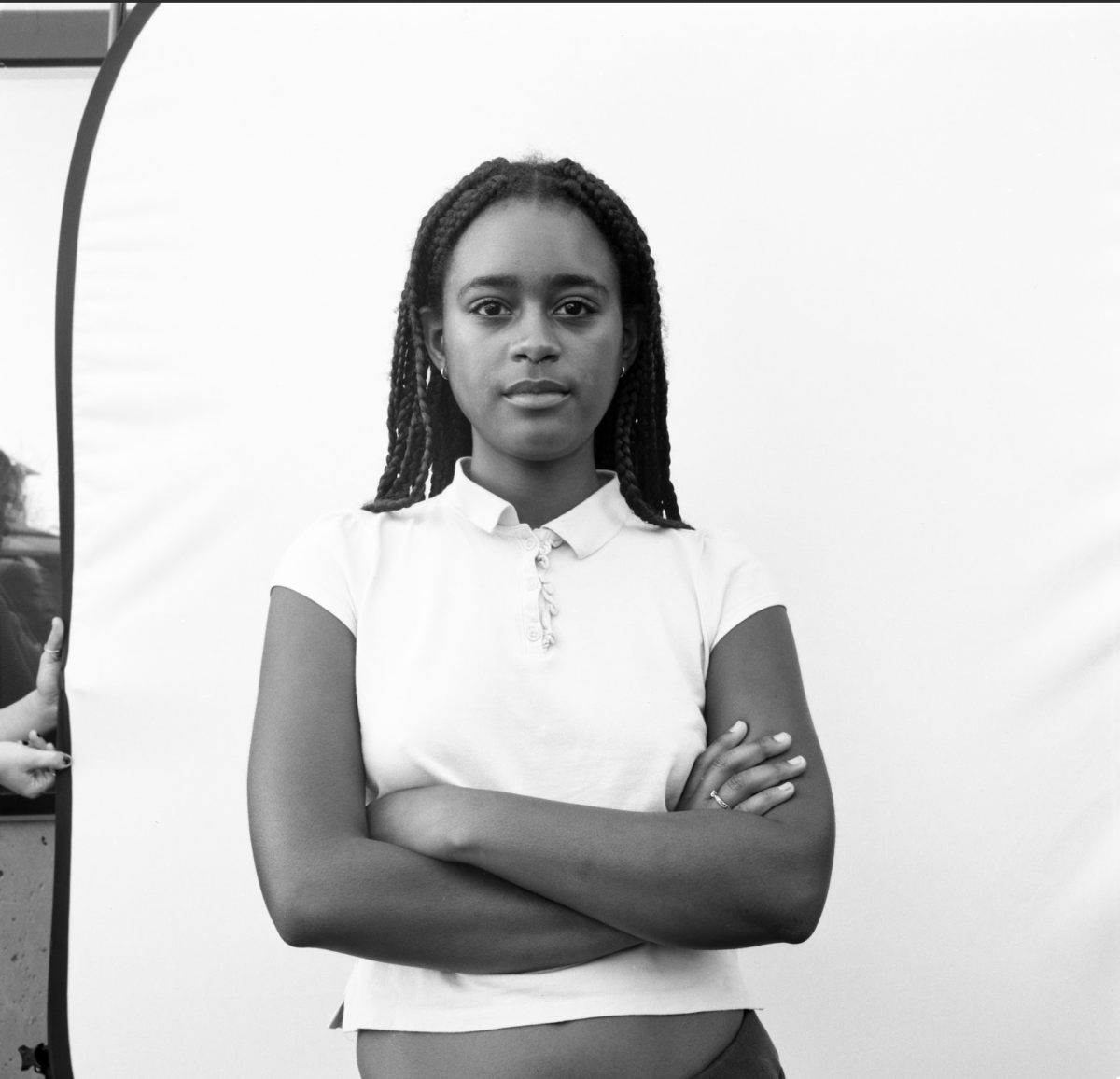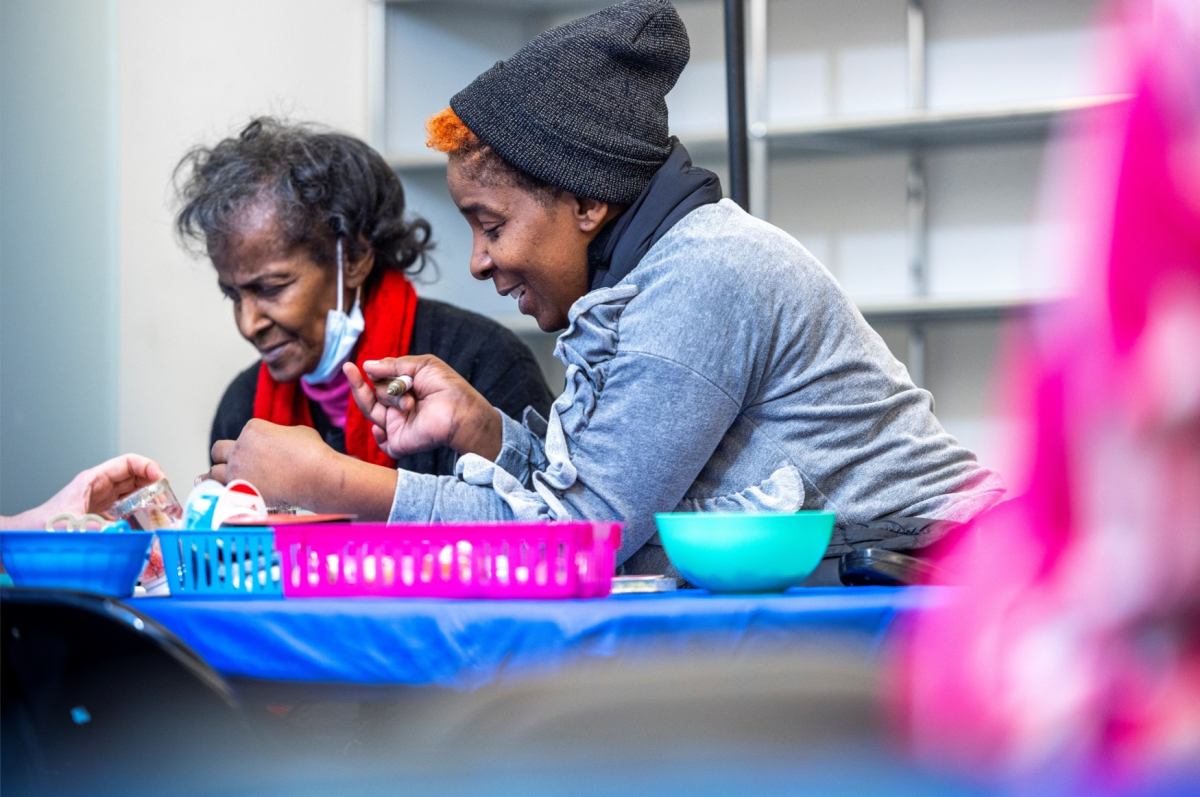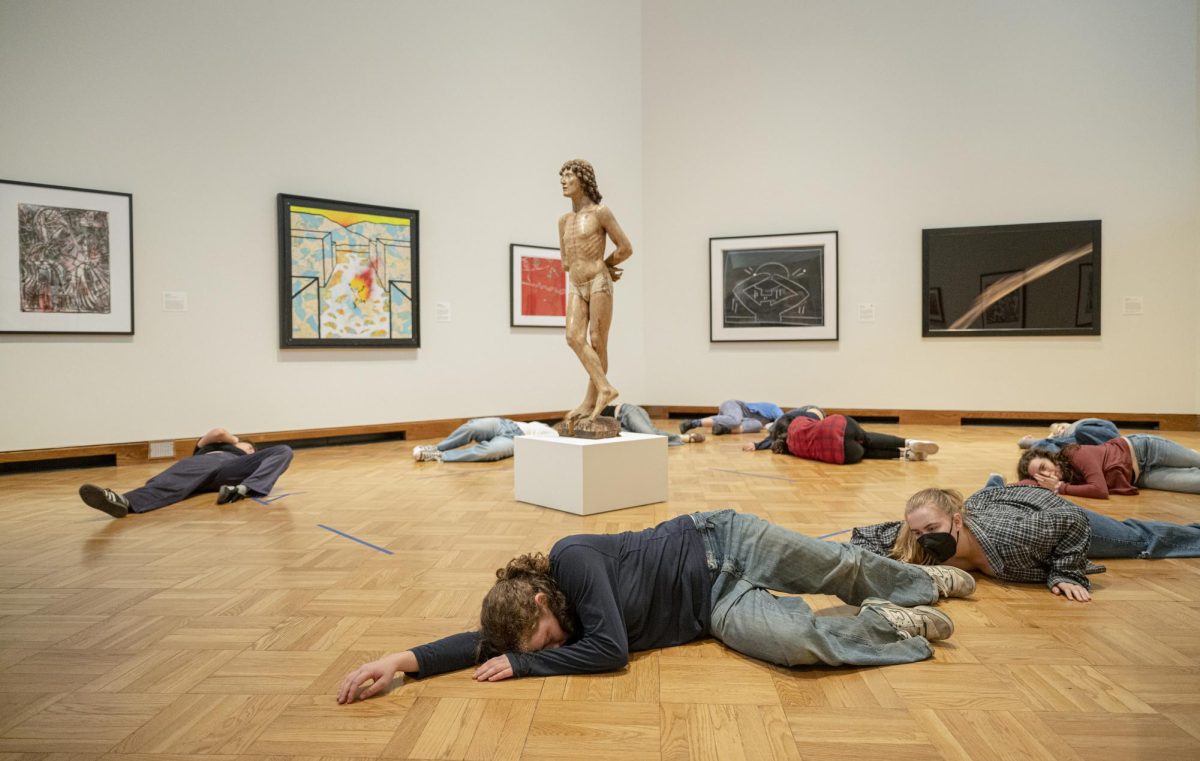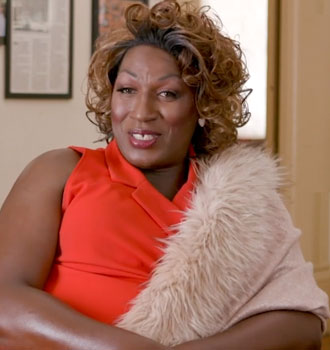This past Saturday morning, I queued up outside the Allen Memorial Art Museum, much as I have for the last three years. When I arrived at the front of the line, I noticed what would become my painting, for a semester at least: Zoë Sheehan Saldaña, OC ’94’s “White-Tailed Deer (America’s Most Dangerous Animal).”
When I picked it up, my housemate remarked, “You got the digital art piece.” The rather large piece looks somewhat like a QR code. Staring at it in my living room, I parsed through the ink markings to find the form of a deer in tall grass. When I looked closely at it, I noticed the work is slightly wrinkled in its frame, like a piece of paper overinked by a printer.
I began to wonder how it might feel for Art Rental artists like Sheehan to have their work hung on infinite varying walls of faceless students who dwell and breathe with it, completely separated from its creator. I sent my artist an email with the subject line “Press Request” and quickly learned she had no idea her piece was in Art Rental.
“I sold it to Jock Reynolds and Suzanne Hellmuth [OC ’68], and I knew that Jock and Suzanne had donated it to Oberlin,” Sheehan said on our Zoom call later that day. As an Art History major during her time at Oberlin, she had spent a lot of time at the AMAM and in the Clarence Ward Art Library and was excited to see the work return to her alma mater. “Jock had talked to me when he was considering donating the piece; he was like, ‘How would you feel about that?’ I was like, ‘That would be awesome, that’s a great end, a great home for the piece. … I didn’t know it had gone into Art Rental, but that’s super cute. I’m delighted. I myself was a recipient of Art Rental!”
Sheehan was fun. She had a great laugh and spoke thoughtfully. She told me that in her time at Oberlin she delivered The New York Times on weekends and helped in an initiative to do more prep for meals at Harkness House because “nobody knew how to soak a damn bean!” She has been teaching for around the last 20 years at CUNY Baruch. For fun, she flies a paraglider.
“I don’t remember the exact piece or pieces that I had,” Sheehan said when talking about participating in the Art Rental as a student, “but I had Art Rental pieces and stood out there in line and had them up. I was in Harkness House in my first year, and I had pieces on the wall there. … I know everybody was fighting for the Claes Oldenburg but I don’t remember what I got. If you remember everything you did at Oberlin, you probably didn’t go to Oberlin.”
From our conversation, I learned that the series my piece is a part of — which documents America’s most dangerous things — highlights how we perceive threats.
“The most dangerous — in that case, animal — turns out to be the white-tailed deer, because so many people are in car accidents with them,” she said. “A lot of it was about your idea of danger and then how that danger is much more banal and human-generated than anything else.”
The other pieces in the series include America’s most dangerous volcano and America’s most dangerous intersection, all centered not on the fear we feel about these things, but on the actual damage they could do specifically to humans. A lot of Sheehan’s work negotiates this idea of the human as the machine and how hand-making can exist in a machine era. In the case of “White-Tailed Deer,” there’s also an interesting effect in how the imperfections of the piece betray its handmade nature.
“To create the pieces, I was starting with a found image on the internet and then did a bunch of manipulations to it in various photo processing stuff and then rendered the result in ink on vellum paper,” she said. “So they’re all handmade, but they’re handmade by an artist becoming a plotter in a machine; in a lot of my work, I was interested in being more machinelike in what I was doing, although not with the accuracy of a machine, but trying to approximate that somehow.”
Part of the intention of my call was to reunite Sheehan with her piece, to know where her white-tailed deer lived, what it saw. About half an hour into our conversation, I took my laptop on the move, giving her a short tour of my kitchen and living room to show the painting in its full context. When the piece was first in frame, Sheehan lit up and began to flip the interview on me, asking about life at Oberlin. She was particularly interested in how the younger generation is or isn’t focused on technology — how we separate ourselves from screens.
“Part of why I resonate a lot with the art that I was looking at on your page is because those things are handmade and then they’re returned to a space that is occupied by machine-made objects, and [they ask] what it means to be making things by hand today,” I said. “My favorite artists here at Oberlin are the ones who when I go to their exhibition and they’re making every element themselves, down to the frame the piece is in, the table that holds up an object; every piece is made by hand. I love that dedication to physical objects and craft.”
Her response stuck with me.
“It can be a position of extreme control, though,” she said. “Part of that, asserting your hand in every single thing, is like not being able to let go. There’s an anxiety in a lot of that that I recognize in my own self and my own work, but I try and listen to it; maybe that’s a part of sending it off: imbue this with all your anxiety and then send it off.”


